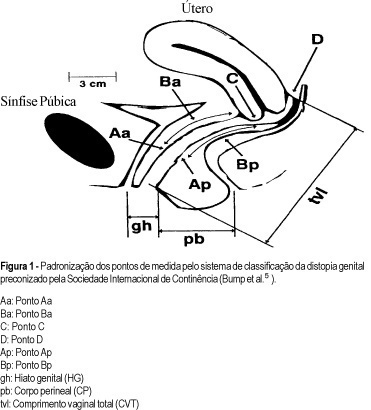Summary
Revista Brasileira de Ginecologia e Obstetrícia. 2003;25(5):353-358
DOI 10.1590/S0100-72032003000500008
PURPOSE: to determine interobserver reliability of site-specific measurements and stages according to the proposed International Continence Society prolapse terminology document. METHODS: we analyzed 51 women during urogynecological investigation performed at the Urogynecology and Vaginal Surgery Sector of UNIFESP / EPM. We recorded the locations of point-specific measures proposed by the International Continence Society (ICS). They are: two in the anterior vaginal wall, two in the superior vagina, two in the posterior vaginal wall, genital hiatus, perineal body and total vaginal length. Then we recorded the stage of genital prolapse. Women underwent pelvic examinations by two investigators, each blinded to the results of the other's examination. The reproducibility of the nine site-specific measurements and the summary stage were analyzed using Pearson's correlation coefficient and the median measurements were compared by the paired-t test. RESULTS: there were substantial and highly significant correlations for each of the nine measurements. Correlation coefficient for point Aa was 0.89 (p<0.0001), point Ba 0.90 (p<0.0001), point C 0.97 (p<0.0001), point Ap de 0.72 (p<0.0001), point Bp 0.84 (p<0.0001), point D 0.91 (p<0.0001), genital hiatus 0.65 (p<0.0001), perineal body 0.66 (p<0.0001) e total vaginal length 0.73 (p<0.0001). We also did not note differences between the means of measurements by the two examiners. Staging was highly reproducible (r=0.81, p<0.0001). ln no subject did the stage vary by more than one; in 86,2%, stages were identical. CONCLUSIONS: there is a good reproducibility of measures using the system proposed by the International Continence Society prolapse terminology document.
